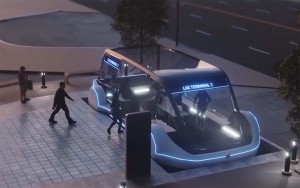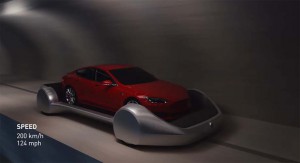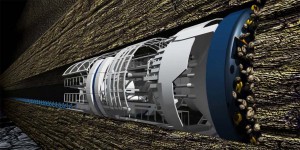
On Dec. 10, Elon Musk's Boring Company will offer free test rides in Los Angeles its test tunnel in California.
Elon Musk’s Boring Company plans to unveil its first “test tunnel” in the Los Angeles suburb of Hawthorne on Dec. 10, and will offer “free rides” to the public a day later, the 47-year-old executive tweeted.
The ultimate goal, Musk previously announced, was to set up a network of underground tunnels that will permit vehicles, pedestrians and bicyclists to whisk around the City of Angels at speeds of up to 150 mph, avoiding the city’s notoriously gridlocked streets. Musk has indicated rides for individuals could run as little as $1.
“The first tunnel is almost done,” Musk tweeted Sunday night to his 23 million followers. The pilot tunnel “Opens Dec 10,” he tweeted, adding, “Opening event that night & free rides for the public the next day.”
Boring is one of a handful of companies started by the South African-born entrepreneur, others including battery-carmaker Tesla, as well as rocket firm SpaceX and SolarCity, a solar panel company that was merged into Tesla last year.
(Chicago signs off on Musk’s Boring Company tunnel to O’Hare. Click Here for the story.)
Musk has also laid out a concept called the “Hyperloop,” in which closed capsules would blast through either sealed tunnels or tubes that have had most of their air evacuated.
By using magnetic levitation to float above the surface of the tube or tunnel, capsules would travel at speeds that potentially could top 600 miles per hour, Musk and other proponents pitching Hyperloop technology as an alternative to more traditional high-speed rail systems.
Though the underground system Musk has envisioned for L.A. and other cities has been dubbed the “Loop,” it relies on different technology. For one thing, the tunnels aren’t sealed, so they operate at normal atmospheric pressure.
To use the system, a vehicle would drive into a station and onto a skateboard-like platform that would then be lowered into the tunnel system. Other electric “skates,” as the electric-powered devices are called, would have an enclosed compartment for pedestrians or bicyclists to ride in.
(Click Here for more about Musk’s underground hyperloop plans on the East Coast.)
The skates could either enter the system by a ramp, or be lowered on an elevator. Elevators, Musk has noted, could even be used to give travelers direct access to a parking structure or office building, even a private home.
For now, it appears, the Boring Company’s pilot tunnel won’t come near to solving the L.A. traffic problem. It runs from the SpaceX parking lot in Hawthorne “for up to” two miles, the company has hinted. Eventually, however, there could be hundreds of miles crisscrossing the city.
Loops would be used for urban runs. And several metropolitan areas trying to cope with heavy congestion are exploring the concept. The City of Chicago, for one, has awarded Boring a preliminary contract to connect its city center with O’Hare Airport, a roughly 20-mile run.
Hyperloops could offer travelers an alternative to conventional rail and air over extended stretches, such as between Los Angeles and San Francisco. Several companies are investing heavily in the concept, including Hyperloop Transportation Technologies, which recently demonstrated a prototype 40-passenger pod in Spain. Also known as Hyperloop TT, it has proposed building a system connecting Kansas City and St. Louis.
(Musk gets preliminary approval for testing tunnel in L.A. Click Here for the story.)
British billionaire Richard Branson is also entering the fray. In 2017, he made a major investment in pioneering firm Hyperloop One which has been rebranded Virgin Hyperloop One.


